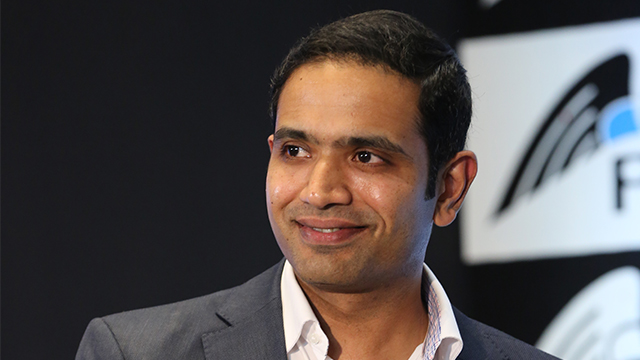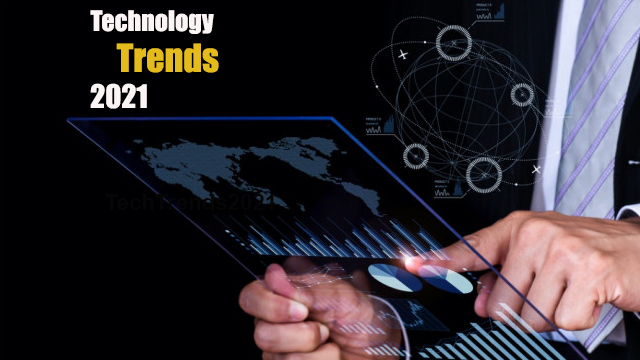The gravity of the COVID-19 pandemic and its widespread impact over the course of 2020 hasn’t been witnessed in most people’s lifetimes. But while for us, it’s an unprecedented situation, history tells us that it will spawn a transformation of society. The year 2020 will be marked as an unprecedented year in history due to the adverse impact of coronavirus worldwide. This pandemic has started bringing extraordinary changes in some key areas. The trends of faster drug development, effective remote care, efficient supply chain, etc, will continue into 2021. Spending 2020 under the shadow of a pandemic has affected what we need and expect from technology. SmartStateIndia discussed with eminent experts on this subject. Excerpts of the views:
 Mr. Sean Duca, Vice President and Regional CSO, Asia Pacific & Japan, Palo Alto Networks
Mr. Sean Duca, Vice President and Regional CSO, Asia Pacific & Japan, Palo Alto Networks
Predictions 2021
2020 was a watershed year and a true test of our collective digital resilience. With the impact of COVID-19 likely to be felt for years to come, businesses are having to relook at their strategies to navigate the new normal in the longer term. With our increased dependence on technology, how successfully are businesses securing their digital future for 2021? Here are our predictions for the cybersecurity trends that will influence our digital futures in 2021…
Prediction 1
Miss travel? Get prepared to share more personal data
Travel bubbles and green lanes will amplify the data privacy debate
Prediction 2
The wait for 5G is over … for those who are ready
The private sector takes over from public as the latter leads the fight against COVID-19
Prediction 3
Working from home gets smarter and safer
Security will get pushed to the edge and simplified
Prediction 4
The year of getting the house back in order
Blue-sky thinking will go out the window as IT teams go back to basics
Prediction 5
Working from home gets smarter and safer
Security will get pushed to the edge and simplified
- Companies everywhere scrambled to implement a variety of measures to facilitate remote working amidst the abrupt lockdowns and social distancing measures. In a matter of weeks, digital transformation moved from “tired buzzword” to an “adapt to survive” necessity.
- From unstable VPN connections to physical fobs and digital keys, a significant number of these solutions rely on legacy technologies and were never designed for numerous, simultaneous connections. Many of these were also only ever meant to serve as short-term fixes or were too complex for employees with limited understanding of the cybersecurity implications.
- If 2020 has taught enterprises anything, it’s that remote working on a company-wide scale is possible. With people at the centre of everything, 2021 now offers an opportunity for businesses to chart a new way forward and ask how they can deliver work to their people.
The value of cloud computing becomes … less cloudy
- With the increased adoption of cloud tools, we could see a reduction in the need for pricier devices with more computing power as virtualised desktops become an increasingly popular solution.
- Businesses could instead provide employees with simpler, connected devices that enable employees to access the programmes and resources they need online, delivering the work to them directly – and in turn, protecting the company’s crown jewels.
- This radical redesign of the way employees connect does away with the cybersecurity complications associated with BYOD – or, as it has become the norm, bring your own computer (BYOC) policies – while enforcing the segmentation of networks more efficiently and effectively.
- Security will then need to be delivered via the edge, which will see solutions such as secure access service edge (SASE) being the new cybersecurity norm, thanks to its flexibility, simplicity and the visibility it offers.
 Mr. Rajesh Maurya, Regional Vice President, India & SAARC, Fortinet.
Mr. Rajesh Maurya, Regional Vice President, India & SAARC, Fortinet.
Security Implications of the Hybrid Workforce
A hybrid workforce is comprised of remote workers, employees who work on-site, and those who go back and forth between working from home and working on-site. This type of workforce has seen a massive increase in popularity recently due to the COVID-19 pandemic. Even after the pandemic subsides, we can expect hybrid workforces to continue in popularity. A recent Gallup poll indicates that 59% of workers would like to continue working remotely in the future. Because of this, it’s more critical than ever to understand the associated security implications and know how to manage them.
With a hybrid workforce comes the need for employees to access work-based programs and applications from both inside and outside the company’s traditional network perimeter. However, multi-cloud adoption has expanded our notions of an enterprise perimeter. Some companies are finding that a cloud-based architecture, particularly a hybrid cloud approach, requires a new strategy.
The pandemic created an accelerated timeline for getting a work-from-home infrastructure in place. This led many companies to risk security gaps in favour of getting things up and running. But as businesses look to create a secure and stable hybrid work model moving forward, properly tackling security issues in a cloud environment is paramount. This starts with understanding how things have changed since the advent of the cloud. In this new paradigm, the traditional hub and spoke model in which all traffic goes through a central data center no longer reigns supreme. Indeed, the focus on outcomes and experiences means that for digital transformation to work, network, security and application performance must be an integrated, end-to-end solution. Accordingly, many organizations are now adopting application aware, secure software-defined wide-area networks (SD-WAN) for optimized WAN performance and secure access server edge (SASE) for cloud-based integration.
A more distributed and disaggregated enterprise means greater emphasis on Zero Trust least privilege principles to secure network access. Companies will also have to find the new balance between networking, security and the compute needs, especially as it relates to shared responsibilities across the infrastructure, platform and software.
Because the threat landscape is much broader with a hybrid workforce, companies are realizing their security needs are more complex than they were before. Implementing Zero Trust requires solutions like network access control, endpoint protection and SASE, for example, but it cannot end there. Having the right tools working together is critical for keeping an enterprise protected as its workforce shifts and evolves. That allows a focus on operating technology to manage risks rather than labouring to integrate and automate multiple products from different vendors – hoping it all works under the pressure of an actual incident. Netorking & Security consolidation is most clearly manifested in the evolution form point defense products, to platforms, to security fabrics.
Hybrid workforces are here to stay, and with the new IT infrastructures required to facilitate this shift come new security implications. Businesses and organizations can address potential cybersecurity risks with an approach integrating networking and security, as well as tools designed to manage a more complex threat landscape and cybersecurity training for users.
 Mr.David Higgins, Technical Director, CyberArk
Mr.David Higgins, Technical Director, CyberArk
Pandemic-Led Pressure Cracks Insiders and Drives Bad Decisions
The pandemic has created tremendous pressure on employees and their families. Economic uncertainty and the move to remote work and school has put many in unchartered territory. These new challenges could likely drive more employees to make poor decisions when it comes to cybersecurity and create a whole new wave of insiders.
As we’ve already seen in 2020, attackers are increasingly offering employees with privileged access tempting financial incentives to share or ‘accidentally’ leak their credentials. In addition, privileged access on the dark web is more popular than ever, with some reports indicating that attackers will pay a premium for privileged access to a corporate networks, VPNs and workstations.
The potential financial payoff, combined with increased economic anxiety, will drive new threats that organizations will struggle to deal with.
 Mr.Adam Palmer, Chief Cybersecurity Strategist, Tenable
Mr.Adam Palmer, Chief Cybersecurity Strategist, Tenable
“Because there is a wide range of maturity for OT security policy across APAC, there is a need for developing and harmonising security best practices. Regional industry groups are likely to drive alignment with international, consensus-driven, standards. As an example, the ASEAN Ministerial Conference on Cybersecurity (AMCC), agreed in 2018 to subscribe in-principle to 11 voluntary, non-binding norms as well as to focus on regional capacity-building in implementing these norms. These norms include Critical Infrastructure Protection and OT protection. In 2018 Singapore published its Master Plan for Operational Technology standards. These efforts are likely to grow across APAC in 2021 as 5G technology is adopted and the OT threat landscape risk grows. Government leaders in India have also been increasingly focused on the security of their industrial technology infrastructure against cyber attacks. Critical infrastructure cybersecurity will therefore likely be a major focus area in India’s National Cyber Security Strategy 2020, and early implementation of the Strategy is expected in 2021.
India, Japan, Brazil, Canada, India and New Zealand all made updates in 2020 on regulations impacting data security standards. All of these countries moved closer to the EU model of minimum cybersecurity standards and substantial fines for non-compliance. This trend is likely to continue with governments reviewing their basic cybersecurity standards in light of the changing threat landscape and concerns for data privacy. Expect to see more extraterritorial reach for these laws as governments mandate basic cybersecurity requirements and leverage fines to organisations who ignore security.
 Mr. Gurpreet Singh, MD, Arrow PC Networks (Dell Technologies Titanium Sector)
Mr. Gurpreet Singh, MD, Arrow PC Networks (Dell Technologies Titanium Sector)
2020 has been disruptive for the tech world all thanks to the Covid-19 pandemic. Technological advancements have been disruptive but also necessary in the pandemic era. Technologies driving digital transformation have led to an increased requirement of security, speed, remote working options and more. This disruptive trend is continuing in 2021 too. IoB or Internet of Behaviours, Hyperautomation, Anywhere Operations, Distributed Cloud, Cybersecurity Mesh, AI/ML, 5G, Edge Computing, Virtual and Augmented Reality, increase in ‘As-a-Service’ computing, Automated Risk Management (ARM), SASE and Low-Code/No-Code are some of the trends that will lead 2021. These trends will increase autonomy and democratization across the organization, enabling parts of the business to quickly react instead of being bogged down by inefficient processes. AI/ML is now being incorporated in all sectors be it education, healthcare or even government. AI has all the possibility of turning into a trillion-dollar industry. With the Indian government easing the remote working rules and drafting cybersecurity policies 2021 is all set to witness groundbreaking technology disruptions.
 Mr. Satish Kumar V, CEO, at EverestIMS Technologies
Mr. Satish Kumar V, CEO, at EverestIMS Technologies
From our learning’s during the last year and peeking into the future, we opine that the ‘Zero Trust Access’ concept is going to be disruptive and transform the security paradigm. With remote work becoming the norm, people and systems have now become increasingly distributed. Access to the enterprise IT network from external contractors and employees is something that keeps security teams on their toes. They will now have to become ‘cyber resilient’. Evolving from perimeter based security to incorporating zero-trust access can often be the solution to such situations. The Zero-trust concept works on the basis that enterprises cannot automatically trust any/all entities internal or external to its perimeter and needs to verify all aspects trying to connect before granting access. Why zero-trust remote access is going to be the future is mainly due to the fact that it is continuously verifying and making identity measurements. It is the eye that is always on and works on a level that is completely different from the perimeter, which is unlikely to come back. Almost three quarters of companies expect to shift 5% or more of their workforce to continue remote work on a permanent basis, according to Gartner. Rather than focus on a single network, zero trust essentially reduces the perimeter to be effective around every user, device, and asset.
 Mr. Ramesh Mamgain, Country Manager, India and SAARC, Commvault
Mr. Ramesh Mamgain, Country Manager, India and SAARC, Commvault
“The year 2020” laid down the foundation for us to pause, reflect and work towards becoming better versions of ourselves as individuals, enterprises and economies. In the hindsight, digital adoption and cloud migration stole the show, opening up avenues for emerging technologies such as, intelligent data management, to be at the forefront of this accelerated transformational journey.
As we step into a new data-driven world, business leaders are taking the compassionate leadership route at the helm of this new normal. As for the future, it can only be navigated successfully by leveraging the in-house data lake through optimised data management solutions, empowering the workforce and clients with robust endpoint protection framework, augmenting use of cloud native applications across environments and unleashing the potential of 5G.
While 2021 and beyond looks promising, the onus lies with digital enterprises to choose the sustainable route and become Future-Ready. Ultimately, the decisions enterprises’ make from here on, be it their IT systems or data security, should not just reflect the capabilities to stay successful today but also deliver ammunition to fight the uncertainties and threats of tomorrow.
 Mr. Suman Reddy, MD, Pegasystems India
Mr. Suman Reddy, MD, Pegasystems India
ModelOps AI will be the pillar of CX in 2021
“2020 ushered in a tremendous mind shift for business leaders in terms of technology adoption. The pandemic accelerated digital transformation as it became the locus for business operations and other uncertainties. In 2021, we will see enterprises investing in artificial intelligence, cloud technologies, and intelligent automation to further safeguard business resiliency and workforce. As AI becomes more ubiquitous and autonomous, governance and empathy will also play a key role in relation to it. With the proliferation of internet of things (IoT) devices and the increased adoption of 5G fueling this trend, computing power at the edge and the ability to leverage AI at the edge will grow too.
ModelOps will become the “go-to” approach for AI deployment. Much like the way DevOps has given structure to the way applications are deployed, ModelOps will reach a tipping point as a way for mainstream businesses to better develop and operationalize their AI models. Also, new technologies like augmented reality, virtual reality, and mixed reality will continue to advance and enhance customer experience.”
 Mr Amit Gupta, CEO & Founder at Rapyder
Mr Amit Gupta, CEO & Founder at Rapyder
Resilience. Adaptability. Agility:
Organizations need to relook at and invest on three key pillars to thrive in the new world order—resilience, adaptability, and agility. And these three pillars are going to be built on the strong foundation of cloud, which allows businesses to operate during disruption, scale up rapidly when volumes peak and stay flexible as the market demand fluctuates.
The year of cloud-native: The changing market dynamics and the need to stay agile and adaptable will further drive the adoption of containerization and cloud-native apps in 2021. IDC predicts that over 500 million Digital apps and services will be developed and deployed using Cloud-native approaches. Kubernetes in production is expected to go mainstream in 2021 as enterprises to strive to roll out applications and services in record time.
This also means that cloud-native security will take center stage in the coming year as more threats will be directed at compromising app data. Subsequently we will see the importance of DevSecOp going up significantly in 2021.
“Edge” over datacenter: Edge computing market is predicted to boom in 2021, owing to the proliferation of private 5G networks and the increasing need for ultra-low latent intelligent edge applications. Personalized content & service delivery, increasing IoT use cases, smart factories etc will clearly push up the need for edge infrastructure. Many industry experts however believe that edge will likely eat into cloud computing spending. In reality, 2021 will see both these technologies complementing and co-existing to deliver true real-time experience to customers.
 Mr. Prashanth G J, CEO at TechnoBind
Mr. Prashanth G J, CEO at TechnoBind
“Every year, the innovations unlocked by technology seem to appear faster and faster. The coronavirus pandemic has forced businesses to adopt digital transformation more than ever before and has accelerated technology in a way we have never seen before. The business landscape has changed significantly over the past decade. Right at the heart of this disruption have been a handful of technologies – cloud computing, Artificial Intelligence (AI) and Machine Learning, data analytics, ‘smart’ devices and the Internet of Things (IoT). As the year comes to an end, it’s important to look to the future for signals of where technology will move the world next”.
There are many trends to watch in 2021, Here are some of the tech trends to watch out for in 2021.
1. 5G Will Go Mainstream
5G will turn out to be real in 2021. As digital collaboration, telecommunication, and videoconferencing turned into a part of our lives it is really required to get ways to boost speed. The deployment of this technology will be important for different tools like IoT.
2. Cybersecurity Mesh
It allows secure access to any asset (i.e. data, file, device, etc.), by any person and from any place, regardless of where the people and assets are located. The benefit of this technology is that it allows people to place the security wall around individuals rather than the entire organization. Thanks to the cybersecurity mesh, the security perimeter goes beyond and covers individuals working remotely.
3. Artificial Intelligence
Artificial intelligence has expanded its grip on our lives throughout the past year. Even as a global pandemic forced many data scientists to work from their homes, AI-driven innovations continued to pour from the smartest minds everywhere. In 2021, we will see more sophisticated applications of artificial intelligence and machine learning (AI/ML) across industries, including financial services.
 Mr. Gaurav Shinh, Founder & CEO, DAAS Lab
Mr. Gaurav Shinh, Founder & CEO, DAAS Lab
2020, a year that no one wants to remember, also the year that catapulted us way into the future. Most people are now working remotely in a digital-first model and we are seeing companies gaining a competitive advantage by the use of AI and by automating processes through hyper-automation.
But this, as I see, is a thing of the past. The real question is ‘What is the next wave of technology that orchestrates a successful and future proof tech-forward transformation?’.
Gartner details out that the Internet of Behavior (IoB) is something we’ll tussle with in their Top Strategic Technology Trends for 2021. To quote, IoB will challenge “what it means to be human in the digital world”.
IoB is an extension of the Internet of Things (IoT) itself, the interconnection of multiple internet-enabled connected devices resulting in a vast array of new data sources. Data from these sources can be used to predict and influence people’s actions.
One needs to understand that the companies using the IoT to influence behaviors aren’t really about the “things”. As the IoT links people with their actions we inadvertently enter into the world of the Internet of Behavior (IoB).
This, as I see it, will be the catchphrase of 2021 and will see businesses evolving in order to have better tech-enabled, user-centric, business delivery models that are reimagined applications of Next-gen IT infrastructure services and are built for flexibility and speed while also being open to flexible technology partnerships.



